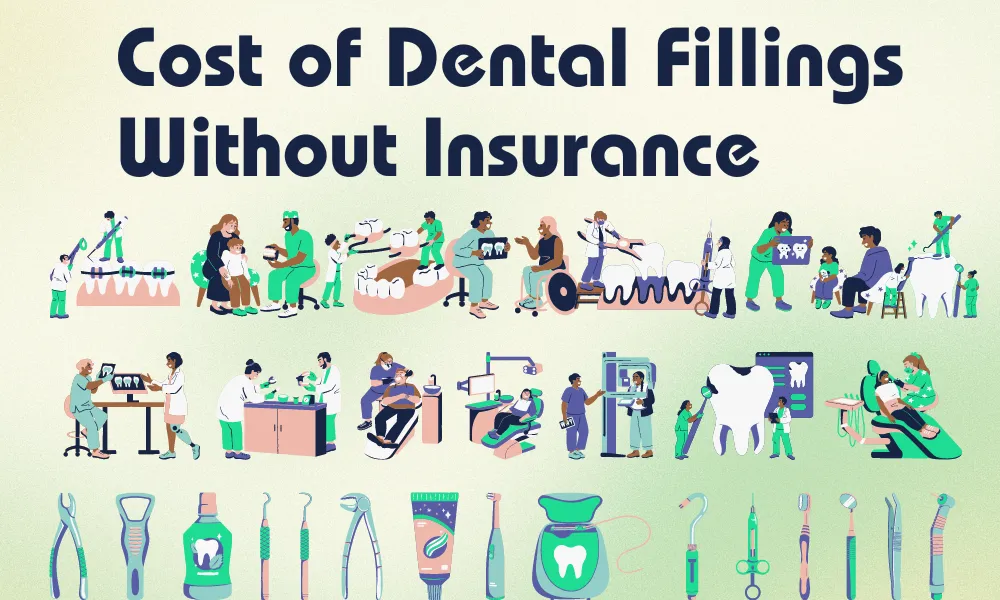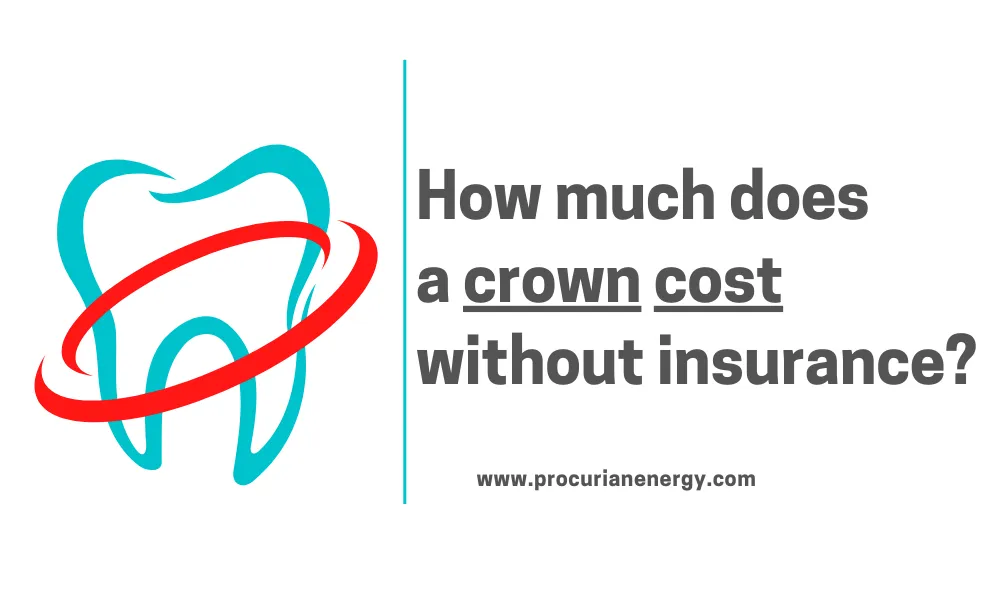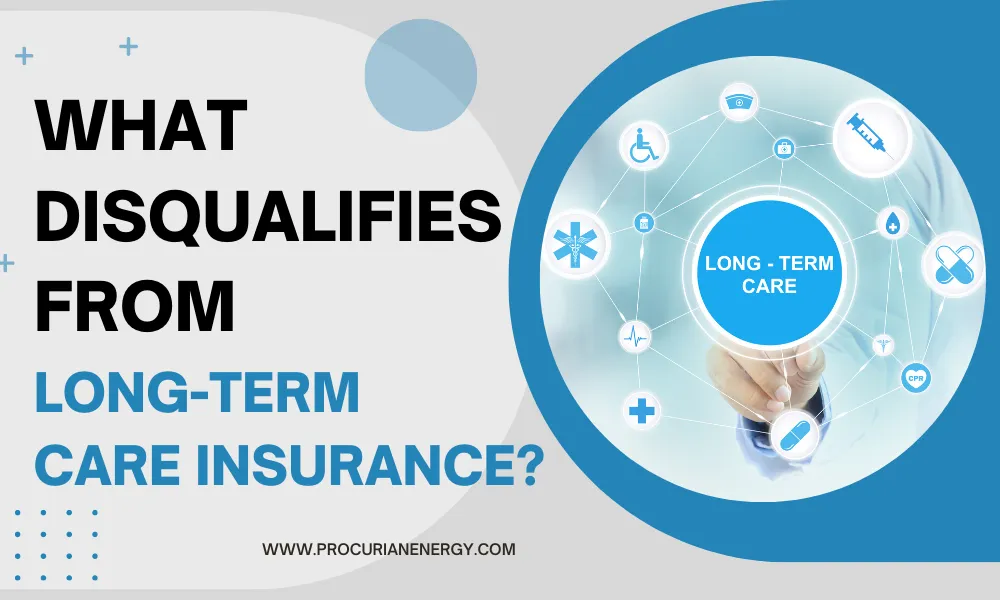Maintaining good dental health is essential for overall well-being and dental fillings play a crucial role in preserving and restoring teeth affected by decay.
However, the cost of dental procedures including fillings can be a concern, particularly for those without insurance coverage.
In this blog post, we will explore the cost of dental fillings without insurance.
What are Dental Fillings?

Dental fillings are materials used to repair teeth damaged by cavities or decay.
They restore the tooth’s structure, prevent further decay and alleviate discomfort.
Different types of dental fillings are available, such as:
- amalgam (silver),
- composite resin (tooth-colored),
- gold and porcelain.
The choice of filling material depends on factors like the tooth’s location, aesthetic preferences and the dentist’s recommendation.
Cost of Dental Fillings Without Insurance

The cost of dental fillings without insurance can vary depending on several factors. On average, the cost ranges from $100 to $300 per filling without insurance.
| Type of Filling | Average Cost (Range) |
|---|---|
| Amalgam (Silver) Fillings | $75 – $200 per filling |
| Composite (Tooth-Colored) Fillings for Front Teeth | $90 – $450 per filling |
| Composite (Tooth-Colored) Fillings for Back Teeth | $100 – $500 per filling |
| Gold Fillings | $250 – $4,500 per filling |
| Ceramic (Porcelain) Fillings | $250 – $4,500 per filling |
| Glass Ionomer Fillings | $75 – $250 per filling |
| Temporary Fillings | $50 – $200 per filling |
Prices can be higher or lower depending on:
- your geographical location,
- the dentist’s expertise,
- the complexity and size of the cavity.
Additionally, the type of filling material used can impact the cost, with amalgam fillings generally being less expensive than composite resin or porcelain fillings.
Factors Influencing the Cost of Dental Fillings
Geographical location and the cost of living in a particular area can significantly influence the price of dental fillings. Dentists in metropolitan areas or regions with higher costs of living may charge more for their services.
The dentist’s expertise, experience and reputation can also affect the cost, as highly skilled dentists may charge higher fees.
The complexity and size of the cavity play a role too, as larger or more challenging cavities may require additional time and materials, resulting in higher costs.
Moreover, if the tooth requires additional procedures like a root canal or extraction, the overall cost will increase accordingly.
Alternative Options for Affordable Dental Care
While the cost of dental fillings without insurance can be daunting, several alternative options can help make dental care more affordable:
1) Dental discount plans and savings programs – These programs offer reduced fees for dental services, including fillings. By enrolling in such plans, you can access discounted rates at participating dental providers.
2) Community health clinics and dental schools – Many communities have dental clinics that offer services on a sliding scale based on income. Dental schools also provide affordable dental care by offering treatment at reduced rates under the supervision of experienced faculty.
3) Financing options and payment plans – Some dental practices offer financing options or payment plans to help patients manage the cost of treatment. This allows you to spread the cost over time, making it more affordable.
4) Negotiating fees with dentists – In certain cases, dentists may be willing to negotiate fees, especially if you explain your financial constraints. It’s worth discussing payment options and exploring whether there’s room for flexibility.
Tips for Saving Money on Dental Fillings

If you’re looking for cost-effective dental treatment, take into account these tips:
1) Maintain good oral hygiene – It can help you avoid cavities and the need for significant dental repair. You can do this by brushing your teeth twice a day, flossing often and scheduling regular checkups with your dentist.
2) Seek early treatment – Addressing dental problems early can prevent them from worsening, potentially reducing the complexity and cost of treatment. Regular dental check-ups enable early detection and intervention.
3) Compare prices and get multiple opinions – Obtain quotes from different dental providers to compare costs. Additionally, seeking multiple opinions can help you make informed decisions about your treatment options.
4) Ask about discounts or payment options – Don’t hesitate to ask dental providers about available discounts or payment plans. Many dentists are willing to work with patients to make treatment more affordable.
How much is a white filling without insurance?
On average, a white filling can range from $150 to $250 per tooth. It’s best to consult with a dentist for an accurate cost estimate.
How much do most dentist charge for a filling?
On average, a basic amalgam (silver) filling can cost between $75 to $150 per tooth.
However, composite (tooth-colored) fillings tend to be slightly more expensive, ranging from $100 to $250 per tooth.
Do you pay for fillings per tooth?
Fillings are typically charged on a per-tooth basis, with the cost varying depending on the type of filling material used and the complexity of the procedure.
Dental insurance coverage may also affect the out-of-pocket expenses for fillings.
How many hours after filling can you eat?
It is best to wait at least 2 to 3 hours after a meal before exercising vigorously or consuming a large amount of food.
This makes it possible to digest food properly and avoids any pain or potential issues.
However, for a light snack or smaller portion, waiting for 1-2 hours might be sufficient.
Which tooth filling last longer?
Gold tooth filling last longer. It is also called gold inlays or onlays made from the mixture of gold and other metals, such as silver and platinum.
They are highly durable and can last anywhere from 15 to 30 years or even longer with proper oral hygiene and regular dental care.
How many times can a tooth be filled?
Teeth can be filled multiple times if the tooth structure is still intact and the decay can be effectively removed.
However, excessive filling can weaken the tooth and may eventually require more extensive treatment, such as a crown or root canal.
What is the cheapest way to get fillings?
The cheapest way to get fillings is usually a government-funded dental facility or a dentistry school.
Many locations have dental clinics that offer low-cost or subsidized services to persons with limited financial resources.
These dental clinics usually provide affordable basic dental treatment, such fillings.
Another option is to enroll in a dental school, where dental students treat patients at low cost while working under the guidance of licensed dentists.
How long do fillings last?
Traditional silver or amalgam fillings typically last 10 to 15 years.
The lifetime of composite or tooth-colored fillings is 5 to 10 years.
Regular dental checkups and proper oral hygiene can extend the life of fillings.
Why are dental fillings so expensive?
Dental fillings can be expensive due to several factors.
- The materials used for fillings such as composite resin or porcelain, can be costly to produce and obtain.
- Dentists need specialized training and expertise to perform precise and effective filling procedures, which contributes to the overall cost.
- Dental practices have various operational expenses including equipment, sterilization procedures, staff salaries and office maintenance.
- Dental insurance coverage for fillings varies and out-of-pocket expenses may increase the perceived cost.
- The cost may also reflect the value of preserving oral health and preventing further complications.
Are fillings more expensive than extractions?
Fillings tend to be less expensive than extractions.
Fillings involve removing decayed material from the tooth and filling the space with a dental material, while extractions involve removing the entire tooth.
The extraction process can be more complex and may require additional treatments such as dental implants or dentures, which can increase the overall cost.
FAQs
How much does a filling cost without insurance?
The average cost of a dental filling without insurance ranges from $150 to $300.
What factors affect the cost of dental fillings without insurance?
The cost is influenced by factors such as geographical location, the complexity of the cavity, the type of filling material used and any additional procedures required.
Are dental fillings more expensive in certain regions?
Yes, the cost can vary based on the cost of living in a particular area. Dentists in metropolitan areas may charge higher fees compared to rural regions.
What are some alternative options for affordable dental care?
lternative options include dental discount plans, community health clinics, dental schools and negotiating fees or exploring payment plans with dentists.
Can I negotiate the cost of dental fillings without insurance?
It’s worth discussing fees with the dentist, as some may be open to negotiation, especially if you explain your financial situation.
Can I save money by choosing a different type of filling material?
The cost of dental fillings can vary based on the material used. Amalgam fillings tend to be less expensive than composite resin or porcelain fillings.
Is it possible to get affordable dental care at community health clinics?
Yes, community health clinics often provide dental services at reduced rates, making them a more affordable option for individuals without insurance.
What are dental discount plans and how do they help reduce costs?
Dental discount plans offer reduced fees for dental services, including fillings. By enrolling in such plans, you can access discounted rates at participating providers.
Can I pay for dental fillings without insurance in installments?
Some dental practices offer financing options or payment plans to help patients manage the cost of treatment, allowing them to pay in installments.
How can I save money on dental fillings without insurance?
You save money on dental fillings by maintaining good oral hygiene, seeking early treatment, comparing prices and exploring available discounts or payment options.
Final Words
Dental fillings are vital for maintaining oral health but their cost can be a concern for individuals without insurance coverage.
However, there are alternative options for affordable dental care, such as dental discount plans, community health clinics and financing options.
By taking proactive steps like maintaining good oral hygiene and seeking early treatment, you can reduce the need for extensive dental work.
Remember, prioritizing dental care is crucial and exploring available options can help you access the necessary treatment and maintain a healthy smile.





